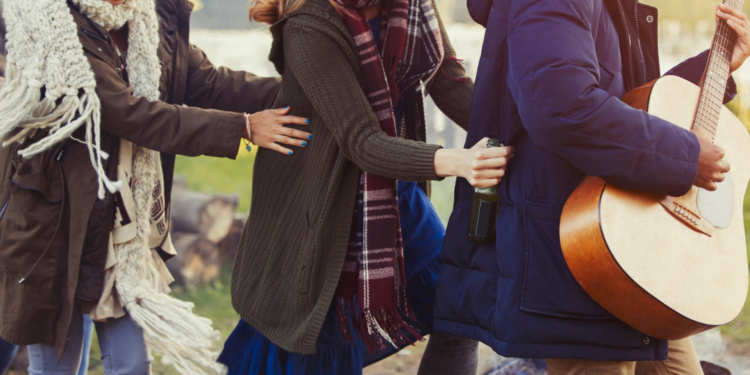By Sara Bell
If you work in or are interested in Equity, Diversity and Inclusion (EDI), you’ll see the value in EDI initiatives that create a more equitable and fair workplace. Unfortunately, as advances are made by some, often backlash erodes the gains for all. I would argue therefore that it’s essential to find, establish and maintain an approach to EDI that takes everyone along, rather than creating dividing lines or feelings of anyone being side-lined.
Specifically, I consider the interconnected nature of multiple, overlapping identities or intersectionality as the key concept driving why it’s now more important than ever to take everyone along. Intersectionality means some people are more likely to experience unique and greater forms of exclusion, discrimination and marginalisation. This term was created because of a legal case which examined how a group of workers who were made redundant ended up worse off, not because they were women and not because they were Black, but because they were Black women. So Diversity initiatives that focus on gender or ethnicity alone are unlikely to create a culture of Inclusion for everyone.
I would like to share some strategies for establishing and maintaining an EDI approach that benefits all employees, avoids dividing lines and feelings of being side-lined, and takes everyone along on the journey.
1. Avoiding Dividing Lines
Diagnose the status of your diverse representation using data to ensure you are talking about the real situation in your organisation. By understanding where there are gaps in representation (e.g., the hiring of disabled employees in mid-level sales, promotion of Black women to senior manager positions in technology, retention and engagement of LGBTQIA+ staff in line management positions in finance), you can be specific and factual about where interventions are needed. Focusing on one aspect only will most likely disenfranchise other employees.
Client Example
I recently worked with a tech organisation that had a hiring target for women in engineering. Many of the line managers were disillusioned with EDI and what felt to them like an equation for EDI with a focus on just hiring women. When we looked at the detailed data, women were clustered in one department and there was a lack of Black men as well as women in line management and leadership. I facilitated a data-led workshop with the extended leadership team, for them to determine the targets for hiring as well as retention. The main focus was a detailed heat-map showing the demographics in each team. By looking at more aspects of Diversity and setting more specific targets for areas of the business, the leaders engaged with the process in a way they would any other business issue. The inclusive workshop process helped to include white male hiring managers in the conversation and they started to look beyond the different aspects of Diversity in hiring, and focused on inclusion of all in the engagement and retention of their people. The data and process engaged and included them and removed the binary male or female hiring focus which had caused a backlash.
2. Include those who are feeling side-lined
Oftentimes white educated men in organisations feel excluded from Equity, Diversity and Inclusion efforts, yet they hold significant influence over the culture and practices in organisations. We have spoken about true allyship and the role of all leaders in creating Inclusion. Along with a focus on diverse representation and inclusive culture, your EDI approach will be more impactful if you are deliberately including the white majority in your organisation (read here about the Global Majority). Reframing narratives and identities can be unsettling, so why would you not support those you are asking to share power, identity and established ways of working? Support those in positions of privilege to do the work to create Inclusion for everyone. Some examples of ways to do this include coaching and training of senior leadership teams as well as facilitated reverse mentoring programmes for leaders to understand the lived experience of others in their company.
3. Take everyone along on the EDI journey
Genuinely taking everyone along recognises that every person and organisation is at a very different starting point. So the action for the EDI approach is to think about how agile, empowered, viral changes can be part of meeting everyone where they are, and encouraging everyone to move in the same direction of Inclusion. In addition to top-down approaches, bring your employee body onboard and empower employees and supervisors to amplify their voice and experience. One way to do this is to create safe or brave spaces for employees to engage in real discussion, for example in employee forums or network groups. Facilitating experience sharing and telling these stories more broadly in the organisation can help others to understand the impact of their language and behaviour on colleagues with different lived experiences, and they will want to act differently rather than being told to.
We have been speaking this year about the EDI journey, how there are phases to maturity that organisations go through to benefit fully from the creative genius of each and every employee. It requires concerted effort from everyone in the organisation to get there. Wherever you are on that journey, I am sure your EDI strategy can take everyone along. You can progress by ensuring you are using data and listening to everyone’s voices where everyone is taking action each day for a more inclusive culture. You know this creates a more positive and productive workplace that benefits all employees, and helps to promote greater equity and fairness in the broader community beyond your business. Taking everyone along is not just the right thing to do, it is also the safest way to ensure that EDI strategies are implemented successfully.
How has your organisation managed to bring everyone along?









